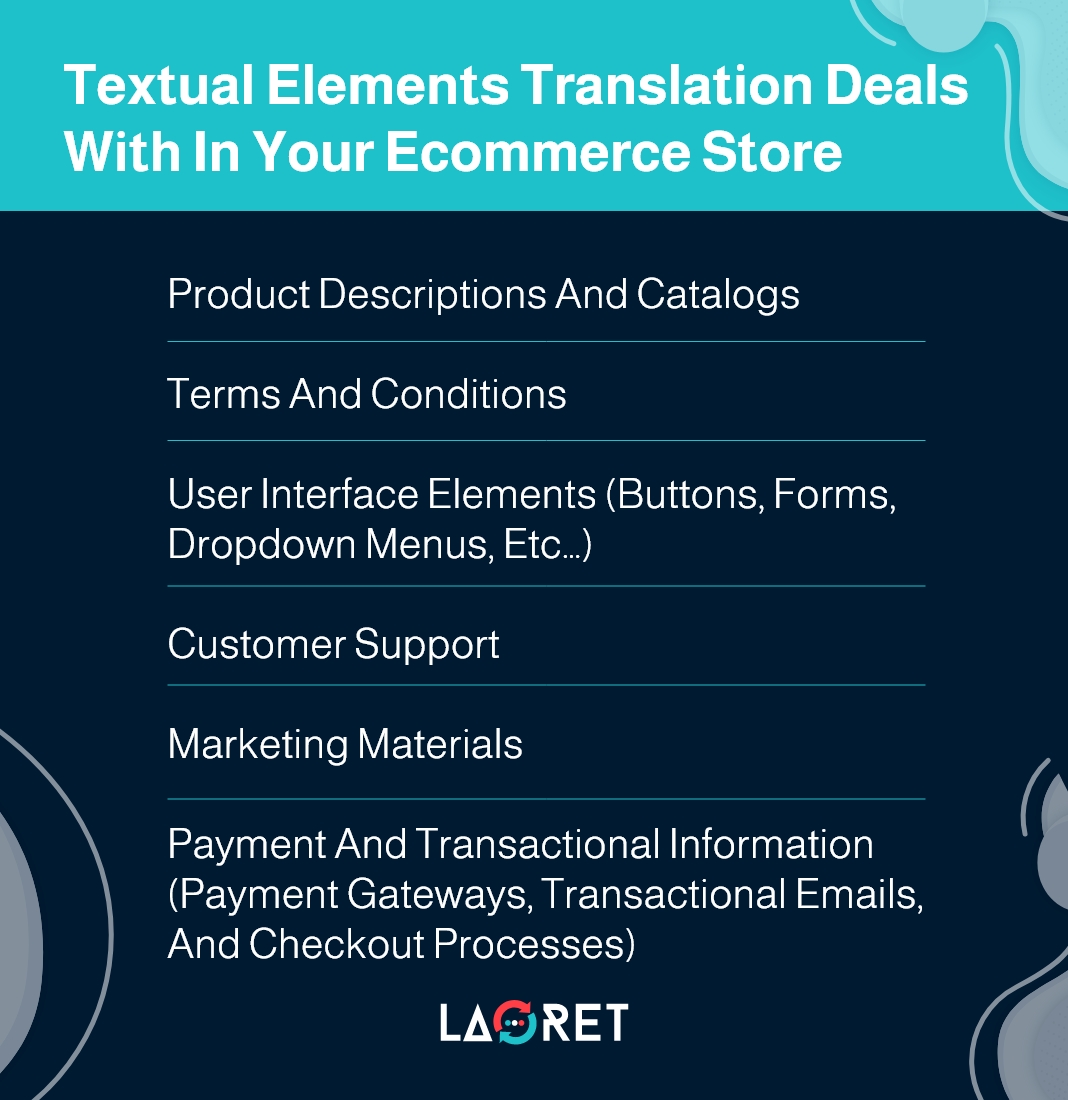eCommerce Localization VS Translation: Best Path Forward
Projected to reach $4,703.00 billion by 2028, the eCommerce market is witnessing unprecedented growth, and it is no mere coincidence but a direct result of the internet’s transformative influence on consumer behavior.
Purchasing habits have undergone a profound shift with buyers craving the convenience of ordering with a simple click of a button. Can you believe that a staggering 33% of the global population are now digital buyers?
But this is not the only thing global customers want; 76% of customers want to buy products from websites in their local language. They want a personalized, almost local shopping experience tailored to their unique needs. And here, you face a critical choice: localization vs translation.
Choosing the right approach for your eCommerce platform can be the tiny difference between success and failure when tapping into a new market.
So which is the best approach for your eCommerce business?
Let’s find out!
Table of Contents
eCommerce Localization VS Translation: What You Need To Know About Both
To make an informed choice between eCommerce localization and translation, it’s essential to understand what they are and know more about the scope and objective of each approach.
eCommerce translation is the process of converting all the textual elements of your eCommerce store from one language to another, aiming primarily at ensuring the entire website is understandable to users speaking different languages.
However, while translation creates an accessible user experience for an international audience, its scope is limited to the linguistic conversion of textual elements from one language to another and does not by any means address regional or cultural differences. This is very important to have in mind when determining your priorities before making a final choice.
Have a quick look at some examples of textual elements that translation deals with when making your platform multilingual.
- Product Descriptions and Catalogs
- Terms and Conditions
- User Interface Elements (Buttons, forms, dropdown menus, etc…)
- Customer Support
- Marketing Materials
- Payment and Transactional Information (payment gateways, transactional emails, and checkout processes)
eCommerce Localization, on the other hand, is a broader approach to adapting eCommerce stores where translation is still an indispensable part of the process. Localization goes beyond content translation to involve a deeper cultural and contextual adaptation of various aspects of your online store to make it resonate culturally with a specific target audience.
While translation cares more about accessibility and the accurate rendering of information, localization considers the usability, navigation, and functionality of your website or app.
Here are the key aspects localization adapts in your eCommerce platform:
- User Interface UI
- User Experience UX
- Graphics & Design
- Multimedia Content
- Customer Support
eCommerce Localization vs Transition: Which Is The Right Fit For Your Store?
Rather than a definitive answer, the localization vs translation question involves weighing numerous factors unique to your business including your target market, expansion goals, available resources, and the level of connection you wish to establish with users in different regions. It’s a nuanced decision only YOU can make, but let’s try to put it simply for you.
Go for translation if:
- You are targeting markets with similar cultural backgrounds
- You are looking for a surface-level type of engagement
- Your budget is limited and you need a more cost-effective solution.
- You have an experimental platform where a surface-level launch will do
Go for localization if:
- You are targeting markets with significant linguistic, cultural, and behavioral differences
- You are looking to engage your audience on a deeper and more personal level
- Long-term global expansion is your strategic priority
- Resources are not a major constraint, and you are willing to invest for maximum ROI potential
If you are still uncertain, it’s always helpful to explore the unique advantages that a well-executed eCommerce localization strategy can bring to your business. Here is a comprehensive overview of the exclusive benefits only localization can offer for final insights to inform your decision-making process.
Struggling to find your ideal eCommerce translation and localization partner?
This whitepaper can be your guide in exploring everything you want to know the qualities of reliable eCommerce translation services
Localization VS Translation: 5 Key Advantages Only Localization Can Offer
Establishing A Professional Presence in Targeted Markets
The initial encounter with your target audience sets the tone for your brand’s image in your target market. You want to assert your brand’s professionalism, credibility, and authority right from the start.
Localization enables you to create this professional presence when tapping into a new market as it demonstrates how truly invested in the region you are, putting effort into being culturally aware and sensitive to the local differences of your consumers. Showing this commitment is very important for building your credibility. A recent study revealed that there is a direct connection between cultural involvement and establishing enduring brand credibility.
But why does this even matter?
It’s simply because you need to stand out from the crowd of competitors, and you are not just competing with other global brands targeting the same region but with local ones that consumers love and trust. That’s why fostering this sense of credibility is crucial for your success.
With a localized shopping experience that feels almost local to your target customers, you even reduce the impression of being an outsider and establish your authority as you become more able to connect and resonate on the local level. Achieving this level of connection and regional authenticity would be unattainable without “cultural relevance,” an advantage that only localization can offer, and a main point of difference between translation and localization.
Boosting Search Visibility for Your eCommerce Platform
There are more than 26 million eCommerce websites and about 5 million apps on Google Play and App Store. That’s a quite big number, and a translation-only neglects highly important considerations for true visibility compared to localization.
Whether it’s search engine optimization (SEO) or app store optimization (ASO), localization makes sure your platform is adapted to meet local search inquiries and caters to regional search habits and preferences, which consequently improves your platform’s visibility. Unlike translation, localization takes into consideration:
-
Preferred Search Engines In The Target Region
While Google, Microsoft Bing, and Yahoo are the most popular search engines globally, Baidu is the most frequently used search engine in Mainland China Yandex in Russia, and Naver in South Korea. Optimizing for the right search engine means you rank higher for your target audience, and moving up a single rank on the SERPs can yield remarkable results – boosting click-through rates by a staggering 32.3%.
-
Preferred App Stores In The Target Region
While the Google Play Store and the Apple App Store are the most popular app stores globally, this does not apply to every part of the world. In China, for example, the Google Play Store is unavailable, and the leading app store there (by market share) in 2022 was actually the Huawei AppGallary. Optimizing your app for the most preferred app store for your target audience means your app is discoverable by as many potential customers as possible.
-
The Local Keywords Used By Target Audience
Localizing your platform involves a thorough analysis of the specific terms and phrases commonly used by the target audience when conducting online searches because these are always culturally tied. Direct translation of keywords means you don’t capture the linguistic and cultural subtleties that exist even in countries that speak the same language (e.g. sneakers in the US are trainers in the UK). Targeting the most used keywords in the region means your customers will definitely find you.
 Creating A Seamless User Experience For Maximum Audience Engagement
Creating A Seamless User Experience For Maximum Audience Engagement
As an eCommerce business, what truly matters is the overall experience you offer as it holds the key to your business success. After all, if the experience falls short of expectations, even the most exceptional products may struggle to find their way into the hands of eager buyers.
As we said before, when it comes to creating a truly exceptional customer experience localization wins. Localization adapts all customers’ touch points from layouts and payment methods to shipping and delivery to align with their cultural differences and local preferences.
This offers them a genuine experience and streamlines their journey on your platform while ensuring they encounter fewer friction points or culturally insensitive content when navigating your platform. Such an amazing experience means they become more engaged with your brand and love to repeat the same experience on your platform.
But if it happens that your website shows culturally offensive graphics or references, making it look totally foreign and disconnected from the target culture, users won’t feel comfortable staying, let alone coming back to you.
Need proof?
Maximizing Sales For Optimal Revenue Growth
It is true localization is considered a higher investment compared to translation, but as you can see, it is the best approach to improve your user experience, boost retention rates, and maximize user engagement.
Actually, every $1 you invest in enhancing your user experience can result in a return of $100. It’s simply because when your customers are satisfied, nothing stands between them and making a purchase. They enjoy your platform and the overall experience you offer, so why would they leave or turn to competitors? It’s time for conversion to happen!
Customers are always willing to pay as long as they know they get an excellent experience. Those who give a higher rating to their experience tend to spend 140% more compared to those who have a poor experience, and approximately 81% of consumers are willing to pay more to a business that gives them a superior customer experience.
Tailoring A Personalized Shopping Experience & Fostering Customer Loyalty
Translating your eCommerce store into Arabic to target consumers in Saudi Arabia, Jordan, the United Arab Emirates, and other Arabic-speaking markets does not offer them a personalized shopping experience.
Although all of them speak Arabic, translation does not provide that sense of location-specific personalization as in using the local dialect of each of these markets for instance. It is localization that ensures this is what your audience gets.
Localization personalizes your platform, services, and products to meet the needs and preferences of your consumers according to where they are located, starting from the choice of the language you use to speak to your customers to how you tailor your deals, recommendations, and information according to their geographical location.
All of this makes your customers feel that your brand is designed exclusively for them and that what you offer is instantly relevant to their needs. But why do you need to personalize your eCommerce platform? Let’s speak in numbers!
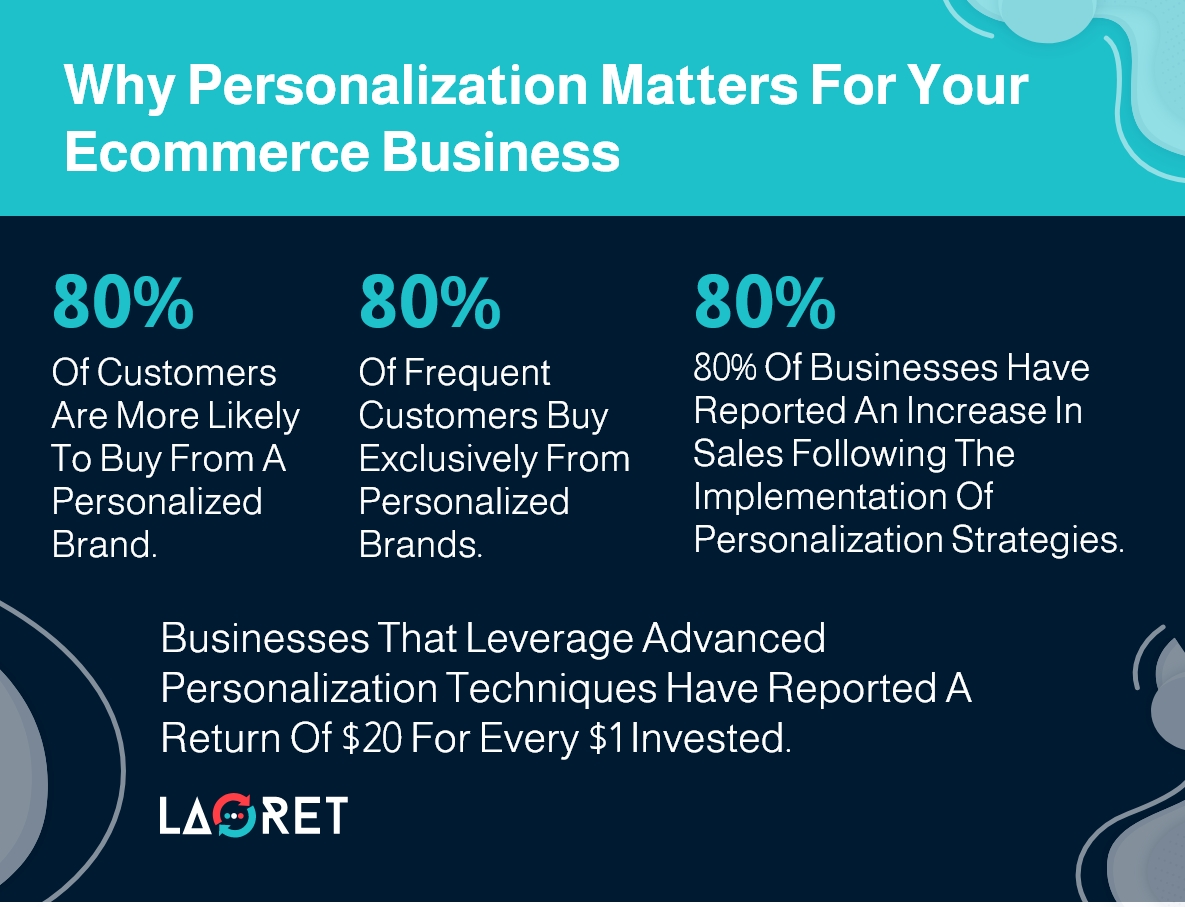
And with a personalized experience, 77% of your customers also become more willing to recommend your brand to others. You make a loyal customer and attract new ones; it’s a winning formula.
Get Your eCommerce Localization Right The First Time With Laoret
Having discussed the major benefits of localization VS. translation, the answer becomes clear. While translation lays an important foundation, localization takes your eCommerce experience to the next level. But for this to happen, you need the help of specialized localization professionals.
At Laoret, we understand the complexities of culturally localizing an eCommerce business at scale. As an ISO-certified agency with deep experience in the eCommerce industry and expertise spanning 120+ languages, we ensure your brand hits a chord in every target market.
Get access to native, in-country professionals who are well-immersed in the culture of your audience to deliver a unique shopping experience that engages, connects, and leaves a lasting impact!

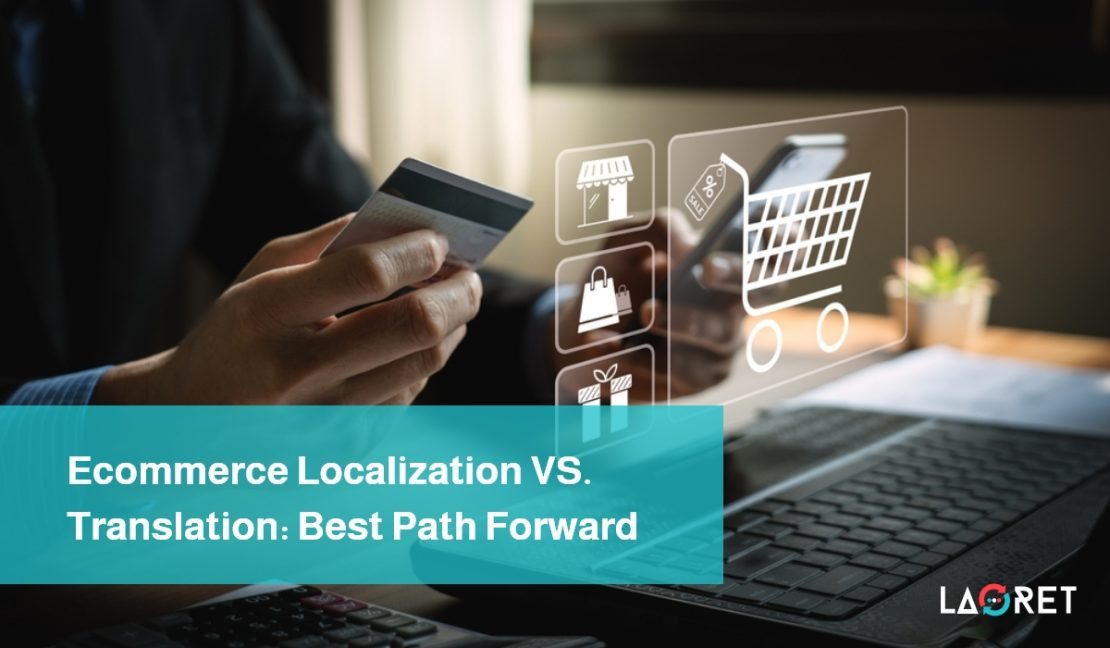
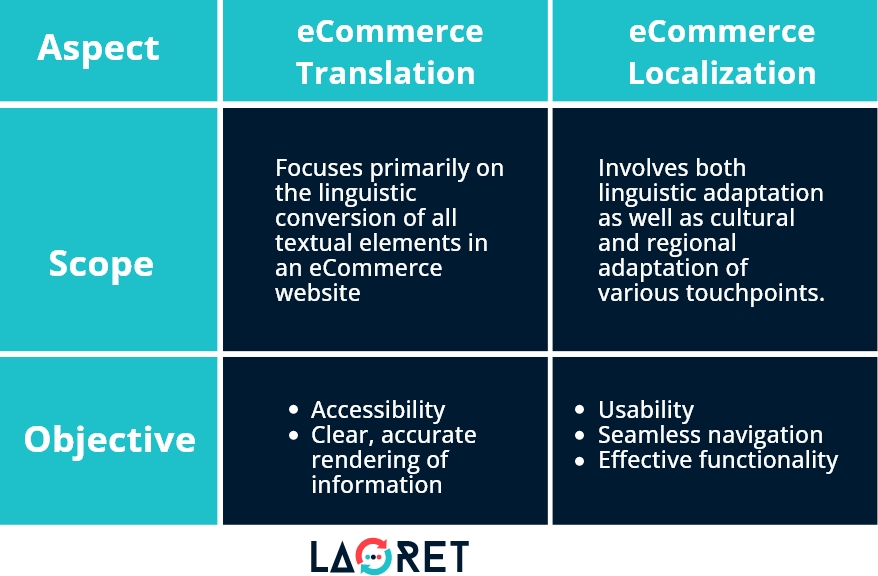
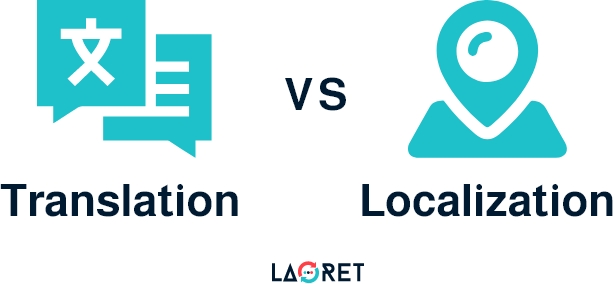

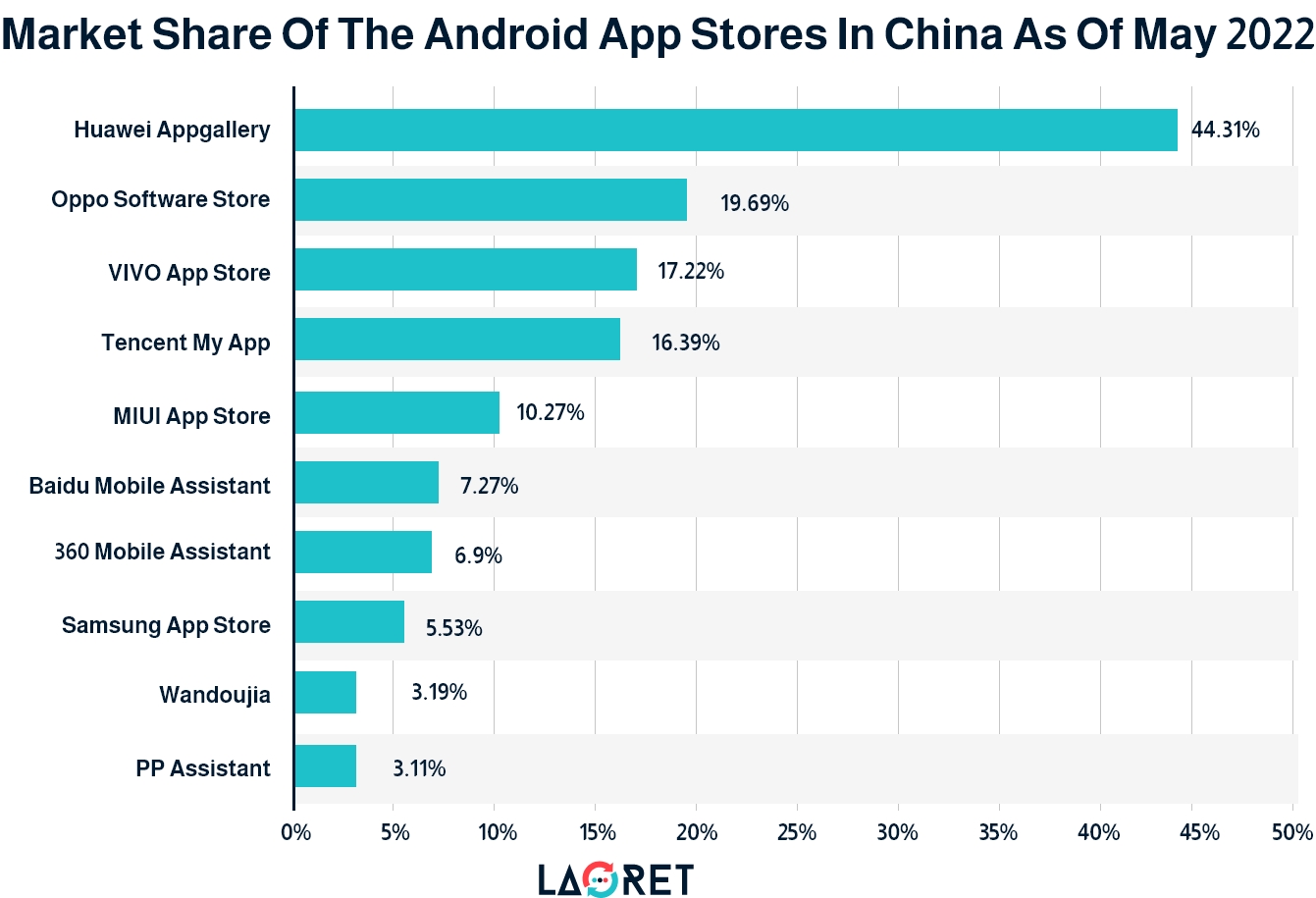

 Creating A Seamless User Experience For Maximum Audience Engagement
Creating A Seamless User Experience For Maximum Audience Engagement